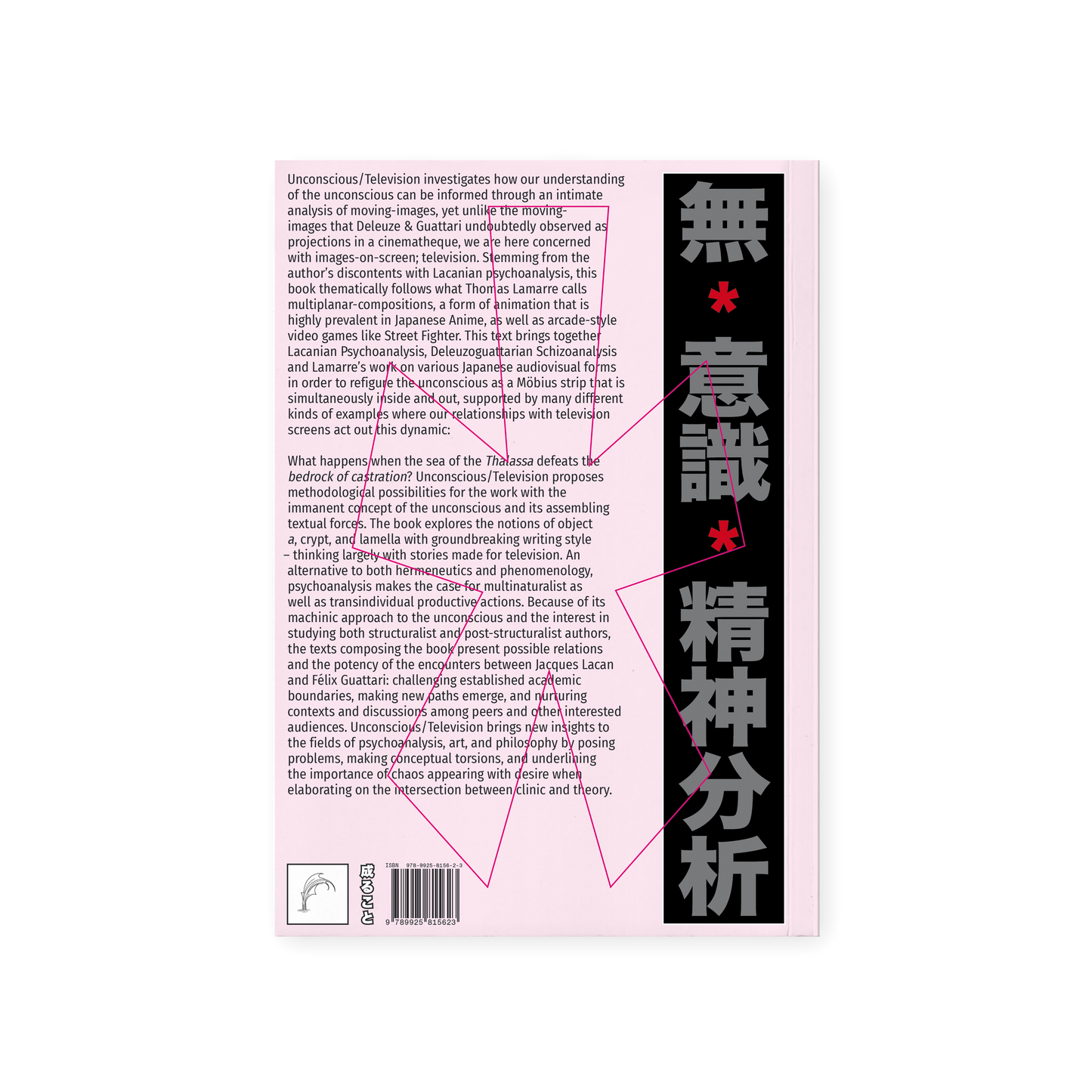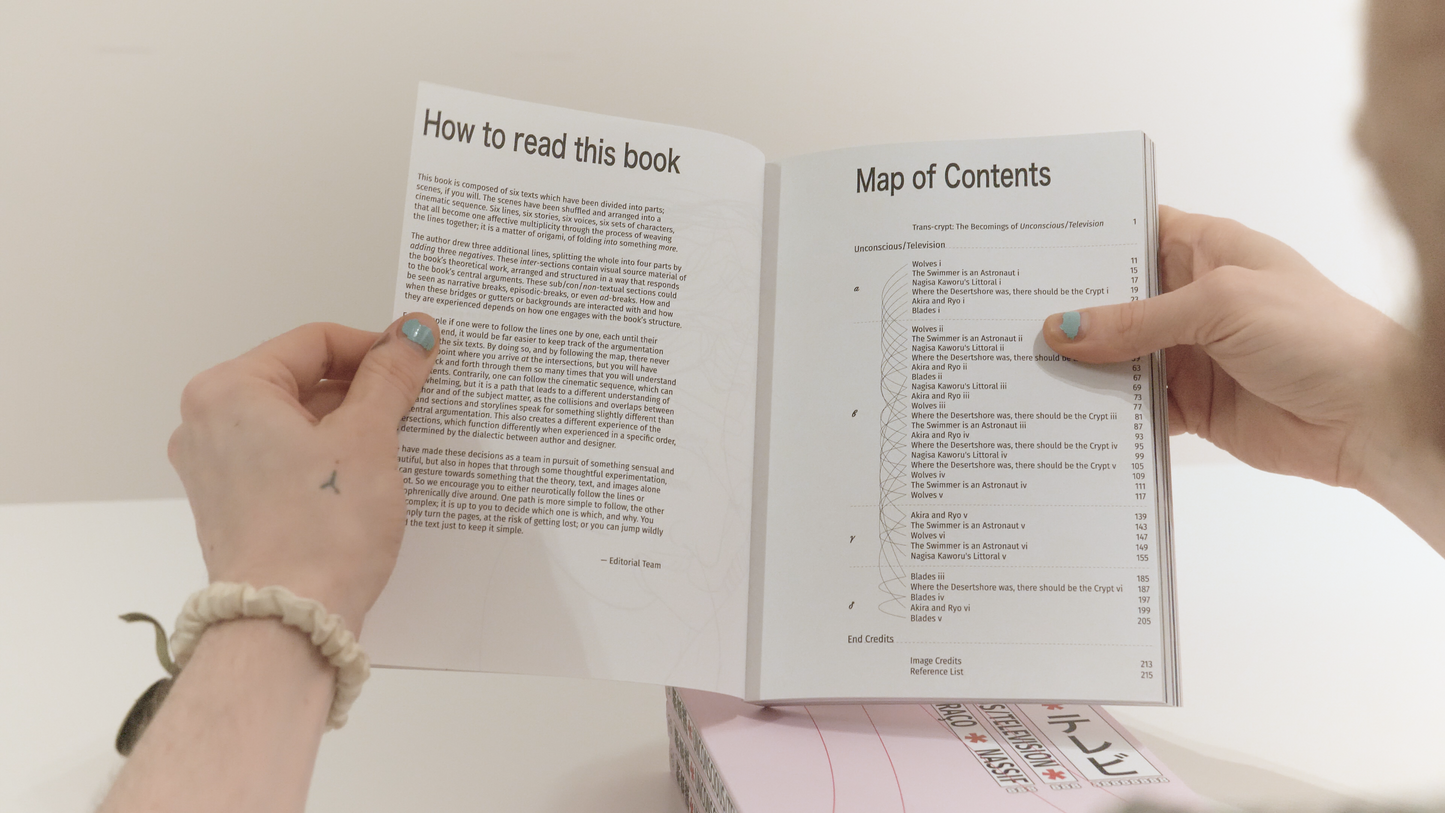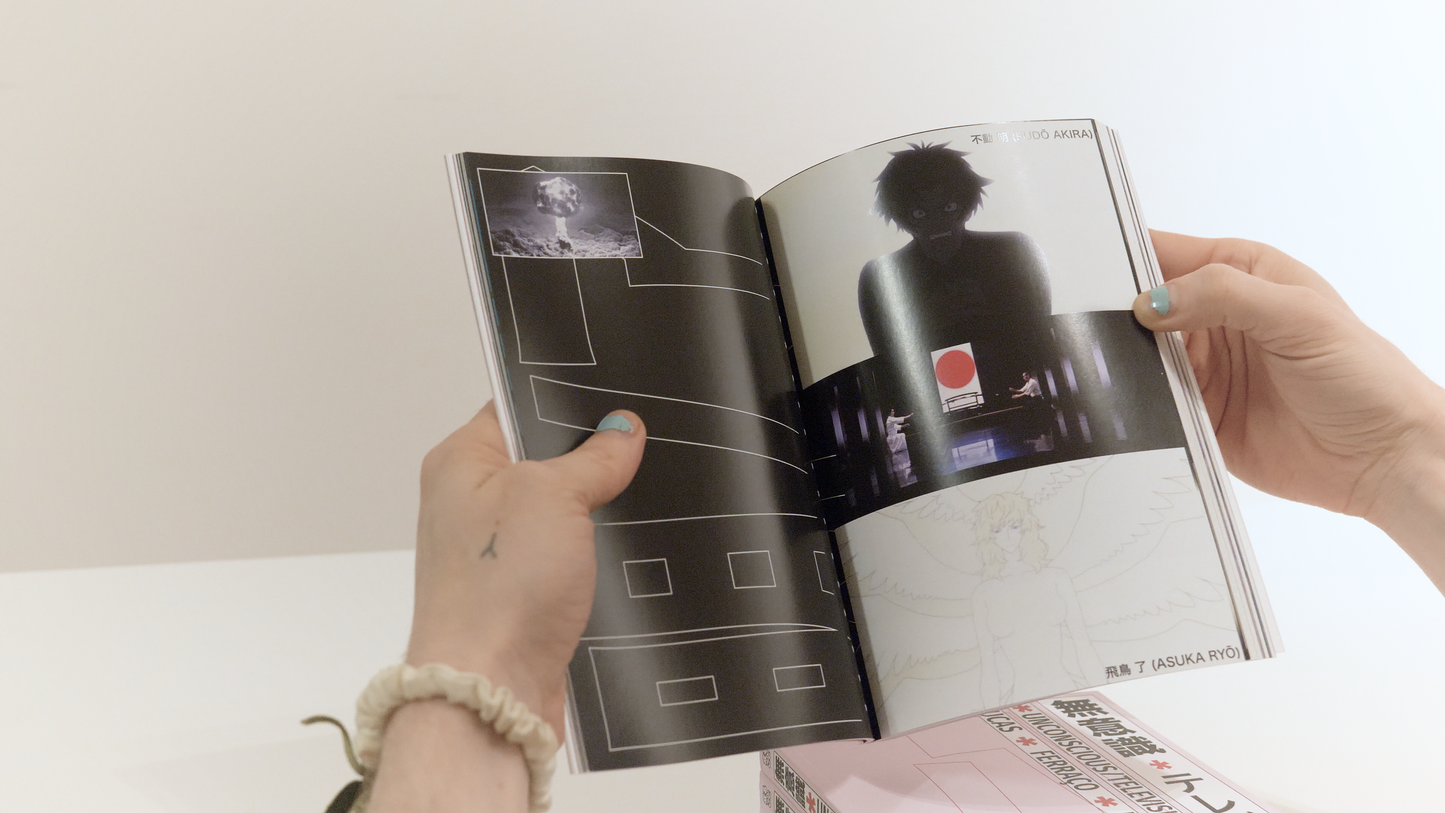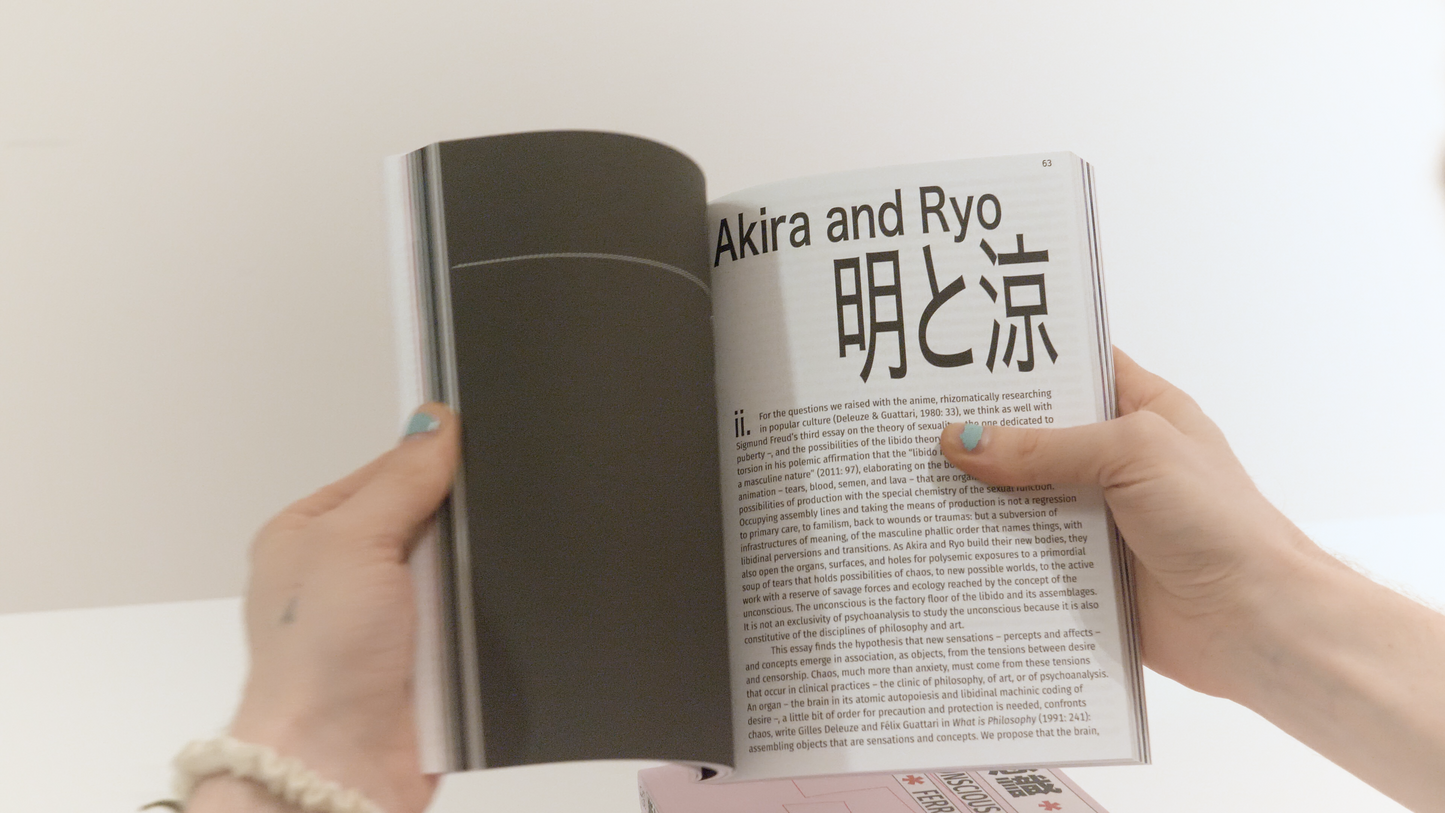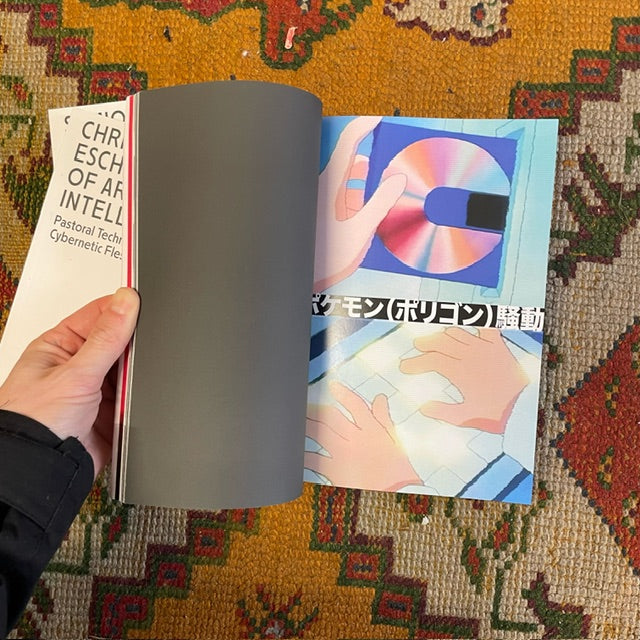Unconscious/Television by Lucas Ferraço Nassif (2025)
Unconscious/Television by Lucas Ferraço Nassif (2025)
Couldn't load pickup availability
This book stems from the author’s discontents with Lacanian Psychoanalysis, by drawing from psychoanalysts like Félix Guattari and Sándor Ferenczi, as well as authors like Viveiro DeCastro, and Thomas Lamarre, to whom the book is dedicated.
The book is dedicated as such because the author is responding to certain groundwork which is laid by Lamarre, who authored two books on Anime, and who inspired Lucas to break out of Western Psychoanalytical discourse by studying Japanese Animated Television. Television is different to Cinema, because it is in-the-middle of everything, it has a body, it emits warmth: the author reminds us of the image of Godard hugging the television. Like in Lamarre’s work, Unconscious/Television holds high value in the “limited-animation” found in Animé which refers to multiplanar compositions, this technique of combining still and moving images. The author takes a special interest in the “in-between” of the layers when elaborating on concepts like the Unconscious, the Lamella, and the Thalassa.
The book is experimental in form, as the six texts that is composed of have been cut-up and re-ordered, and then split once again into four parts with three dynamic intersections. We have folded the form of the book back in on the text itself, to create a demonic fusion, which, as we see in Devilman CryBaby, can become weapons against the Symbolic.
“The new book of Lucas Ferraço Nassif about the Becomings of Unconscious/Television will certainly be a fundamental reference for several fields of knowledge – from anime and media studies to literature, visual arts, psychoanalysis and even fashion. It is probably one of the most original and audacious narratives written in recent years. The organization was conceived in partnership with the editorial team, and the result is a dynamic game of metamorphoses between content and form, without the traditional dichotomies. During my reading, I thought about a book becoming a film (or anime), a visual narrative becoming gesture, and all these images becoming an internal musical composition. The dialogues with Thomas Lamarre, Sandor Ferenczi and, of course, Gilles Deleuze and Félix Guattari reverberate in the flesh. In the first pages, Nassif quotes Isabel Ghirardi: “language is secretion”. I immediately thought about the butoh dancer Hijikata Tatsumi, who used to say:
“expression is secretion”. Let’s keep this in mind during our reading. This will be a powerful strategy to make words, feelings and images flow through our bodies reinventing ourselves.” ~ Christine Greiner, Chair of the Department of Art at the Pontifical Catholic University of São Paulo
BIO: Lucas Ferraço Nassif holds a Ph.D. in Literature from the Pontifical Catholic University of Rio de Janeiro. He’s a researcher at the Cinema and Philosophy Laboratory, part of the NOVA Institute of Philosophy, and a member of the Portuguese Center of Psychoanalysis. Director and editor of the films Reinforced Concrete, Being Boring, and Unfamiliar Ceiling/The Beast; and author of the book Missing Links, published by Barakunan, and awarded by the Association of Moving Image Researchers [AIM] in Portugal as the best monographic book of 2023.
DETAILS:
Authored by Lucas Ferraço Nassif
Edited by 0nty
CAT. # BECOMING008
ISBN: 978-9925-8156-2-3 (Print)
ISBN: 978-9925-8156-3-0 (Digital)
A5, 218 pages, colour
First edition: January 2025
TO BE CITED AS:
Nassif, L. F. (2025) Unconscious/Television. Berlin/Nicosia: Becoming. 978-9925-8156-2-3.
Share

